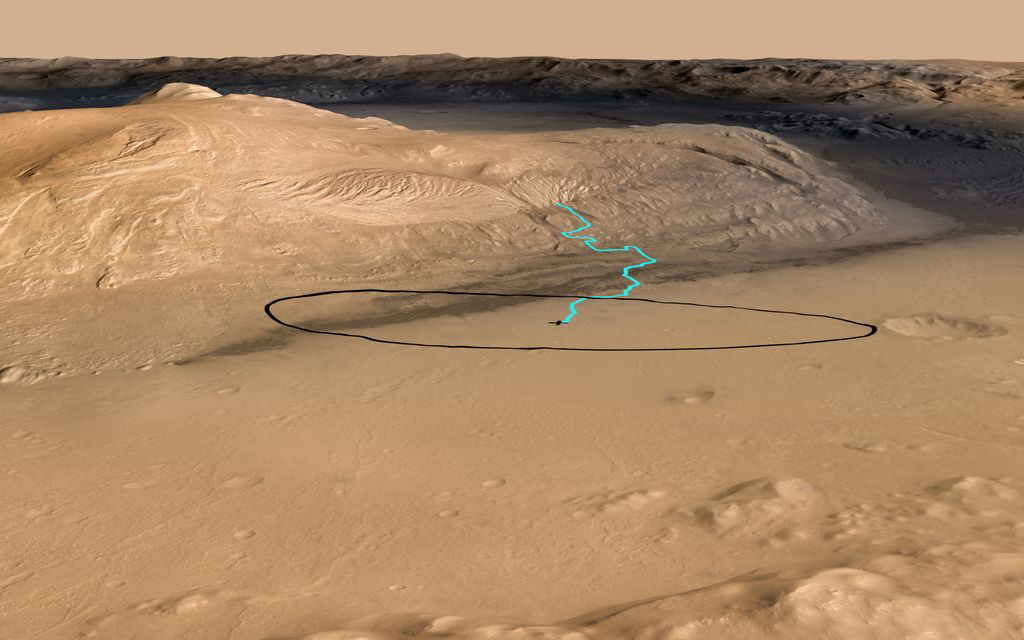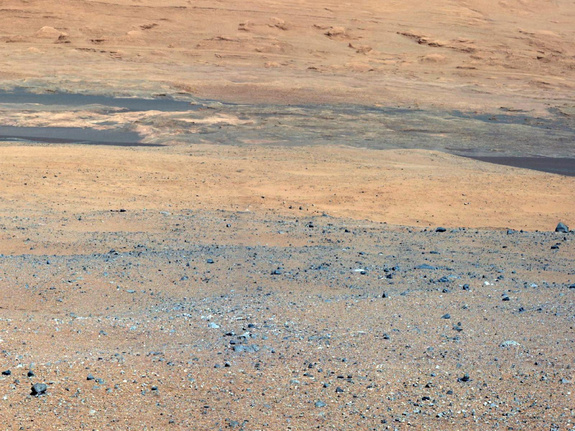
NASA's Mars rover Curiosity has survived its four-day "brain transplant" in fine shape and is now gearing up for its first Red Planet drive, scientists announced today (Aug. 14).
Engineers upgraded Curiosity's flight software over the weekend, switching the rover's main and backup computers from landing mode to surface mode. The four-day overhaul temporarily halted Curiosity's science and instrument-checkout work, which had begun almost immediately after the rover touched down inside Mars' Gale Crater on the night of Aug. 5.
But those activities can resume later today, on the rover's ninth full Martian day — or Sol 9, in mission lingo — because Curiosity's brain surgery went well, researchers said.
"It came off pretty much without a hitch," Curiosity mission systems manager Mike Watkins, of NASA's Jet Propulsion Laboratory (JPL) in Pasadena, Calif., told reporters today. "All four days went as planned, so we're now 'go' to continue our checkout activities."
As part of the checkout process, Curiosity's handlers hope to turn the rover's wheels for the first time in the next week or so, Watkins added. [Gallery: Curiosity's 1st Photos of Mars]
"We're going to test the steering actuators on Sol 13, and then we are going to take it out for a test drive here probably around Sol 15," Watkins said. "We're going to do a short drive of, you know, a couple of meters, and then maybe turn and back up."
Seeking habitable environments
Get the world’s most fascinating discoveries delivered straight to your inbox.
Curiosity is the centerpiece of NASA's $2.5 billion Mars Science Laboratory mission (MSL), which seeks to determine if the Red Planet could ever have hosted microbial life. To get at this question, Curiosity will analyze Martian rocks and soil with 10 different science instruments for the next two years or more.
The MSL team is interested in studying formations near the rover's landing site, which sits just downslope of an ancient alluvial fan — a feature likely created by water flowing downhill. But Curiosity's main target is the base of Mount Sharp, the mysterious 3.4-mile-high (5.5 kilometers) peak rising from Gale's center.
Mount Sharp's many layers preserve a record of Mars' changing environmental conditions going back perhaps a billion years or more, researchers have said. And Mars-orbiting spacecraft have detected evidence of clays and sulfates in the mountain's foothills, suggesting that Mount Sharp's lower reaches were exposed to liquid water long ago.
These foothills lie about 5 miles (8 km) from Curiosity's landing site as the crow flies, researchers said. The rover will have to pick its way through a dune field to get there, and it will likely make a few stops en route to study interesting rocks.
Curiosity can cover about 330 feet (100 meters) per day — about the length of a football field — so it will take the rover a while to reach its destination.
"It's going to take a good part of a year to finally make it to these sediments on Mount Sharp," said MSL deputy project scientist Ashwin Vasavada of JPL.
Itching to move
It will be another month or so until Curiosity and its instruments are fully vetted and the rover is ready to devote itself completely to science operations, Watkins said. But everything looks good so far.
"We have a fully healthy rover and payload," Vasavada said.
He and the rest of the MSL team are eager for Curiosity to really get rolling on the Martian surface.
"I think it's fair to say that the science team and our rover drivers and really everybody are kind of itching to move at this point," Vasavada said. "So the science and operations teams are working together to evaluate a few different routes that will take us eventually to Mount Sharp."
This story was provided by SPACE.com, a sister site to LiveScience. Follow SPACE.com senior writer Mike Wall on Twitter @michaeldwall or SPACE.com @Spacedotcom. We're also on Facebook and Google+.





